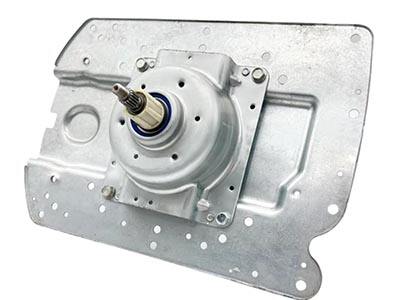There have been a lot of changes in the world of washing machines over the years. Bottom line: These alterations have not only made our washing machines more efficient at their work but also made our laundry easier to do at home. Newer technologies have greatly enhanced the way washers function. An essential component of a washing machine is its transmission. The washing parts like transmission enables the machine to effectively spin and wash clothes. So, let’s explore how the designs of washer transmission systems have evolved and improved over the years for improved laundry experience.
Upon noticing some washer transmissions on the floor.
Many years ago, washing machines came with something known as belt-driven systems to assist them spin. These systems operated by transferring power using belts, but there was a catch. These belts would eventually get worn and snapped, rendering the machine useless. That had a potential to be very frustating to have to deal with. But as technology improved, new kinds of transmissions were developed. Modern transmissions use microphones instead of belts. That is how they can turn the machine in a quieter manner and do work done in a more effective manner. The washing machine transmission are also a lot stronger and more reliable than the old band-driven frameworks we used to have.
From Belts to Electronics
Older machines that utilize belt-driven systems typically function by utilizing belts and pulleys to transfer power from the motor to the drum of the washer. These systems did work, but had some issues that left them less than ideal. For example, the belts could crack or stretch after long-term use. That often ends up in costly repairs and nobody wants that right? Conversely, electronic transmissions are far superior due to having sensors and circuit boards. These bits aid in controlling the speed and direction of the spinning drum for a smoother and more consistent washing experience. That means your washing machine has a consistent job to do that you can rely on.
How New Designs Make Washers More Effective?
Electronic transmissions offer a multitude of benefits over the old belt-driven systems. Energy efficiency is one of the biggest benefits. That means they use less electricity to wash clothing, and that’s not just good for your wallet, it’s also good for the environment. These modern transmissions also grant much greater control over how fast the drum spins and how it moves around during the wash cycle. This ensures that clothes are cleaner in shorter time. Another significant advantage is that electronic transmissions run much more quietly and experience much less shake during the wash cycle. This results in a more enjoyable laundry experience since you will not have to deal with any loud noises or a vibrating machine while cleaning your clothes.
How Technology Helps Washers Last Longer?
These advancements are not unlike the electronics found in 21st century washers, which are built to last much longer than washers without such technology. The electronic pieces are built to endure the daily wear-and-tear washing machines experience. This translates to being generally more durable and reliable. As a result, they have a lot less problems with breakdowns requiring repairs and thus less costly repairs. And no one wants to fork out extra cash on getting a washing machine fixed. And since electronic transmissions are more efficient, these can translate into significant savings on electricity bills over long run. That means you can spend some less money while still enjoying a machine that’s— you know, better for the planet and onesol on.
And for those who want to preview the future of washing machines, here are smart washers that can be controlled and monitored via smartphone.
Washer transmission designs keep getting better and when you think about how far technology has come in the last couple of decades, the future is bright. Now, all this has been there but one cool new feature is the introduction of smart technology in washing machines. Like smart washing machines, washing machine for parts can be controlled from a distance using a smartphone app. What this means is that you can start a load of laundry from anywhere, whether you be home or out doing errands. You can also check to see when your laundry will be done without being in the laundry room. Next-generation washer transmissions might even have features such as self-diagnostic capability, which can inform you when parts need to be replaced or services performed through alerts on your phone. With these new services, doing laundry is about to get even easier for families everywhere.
Conclusion
Washer transmission tech has come a long way since the good old belt-driven systems. When it comes to washing machines, newer washers equipped with electronic transmissions (and the technology they enable) are more efficient, better performing, and more durable than ever, thanks to the increased ability to analyze performance. From smart appliances to new washing practices, the future of laundry is quickly approaching. Early innovations which are yet free from the clutches of companies will pave way for innovative designs from companies for our laundry in the decades to come. Doing laundry will become easier and more efficient so that it would be a task that everyone can perform with simpler manner.

 EN
EN
 AR
AR NL
NL FI
FI FR
FR DE
DE EL
EL HI
HI IT
IT JA
JA KO
KO PL
PL PT
PT RU
RU ES
ES SV
SV ID
ID SR
SR UK
UK VI
VI SQ
SQ TH
TH TR
TR FA
FA AF
AF GA
GA CY
CY BN
BN MY
MY
